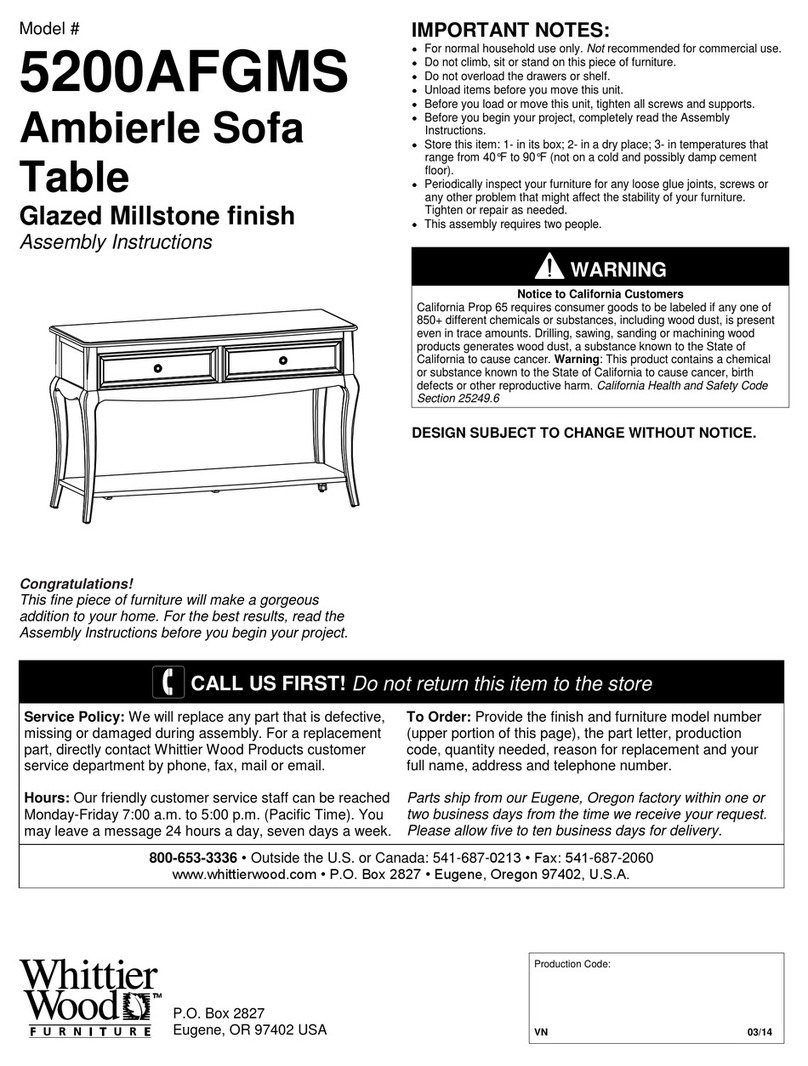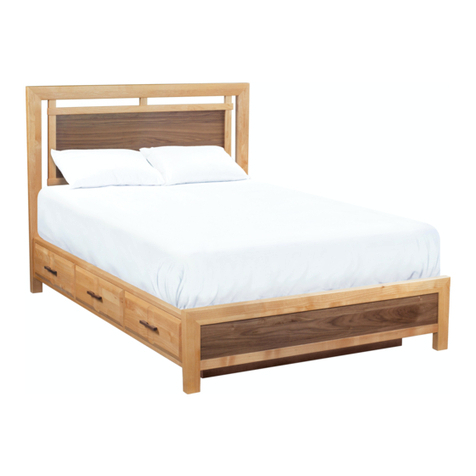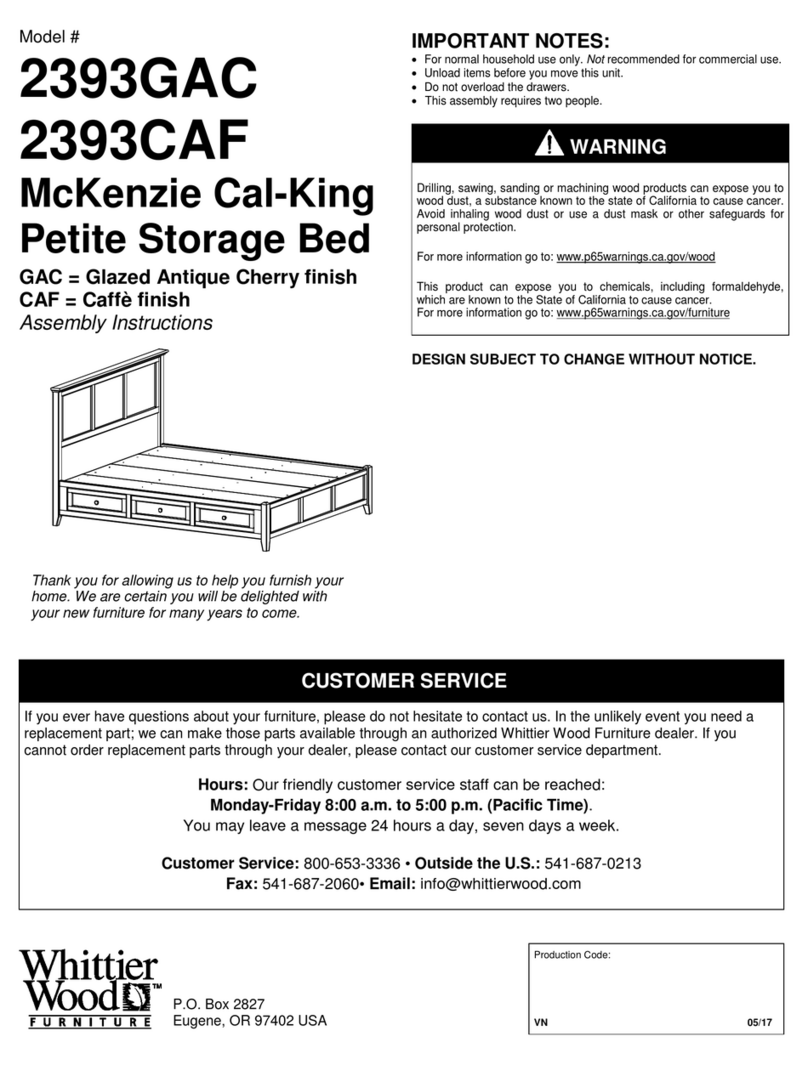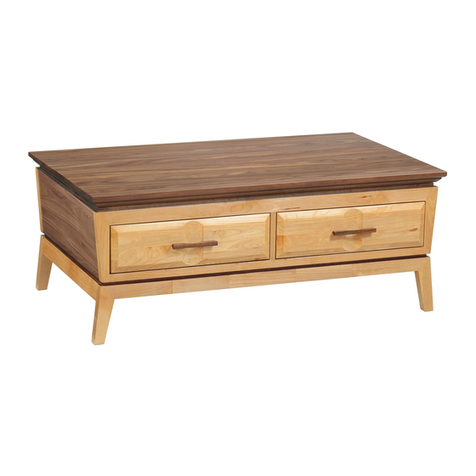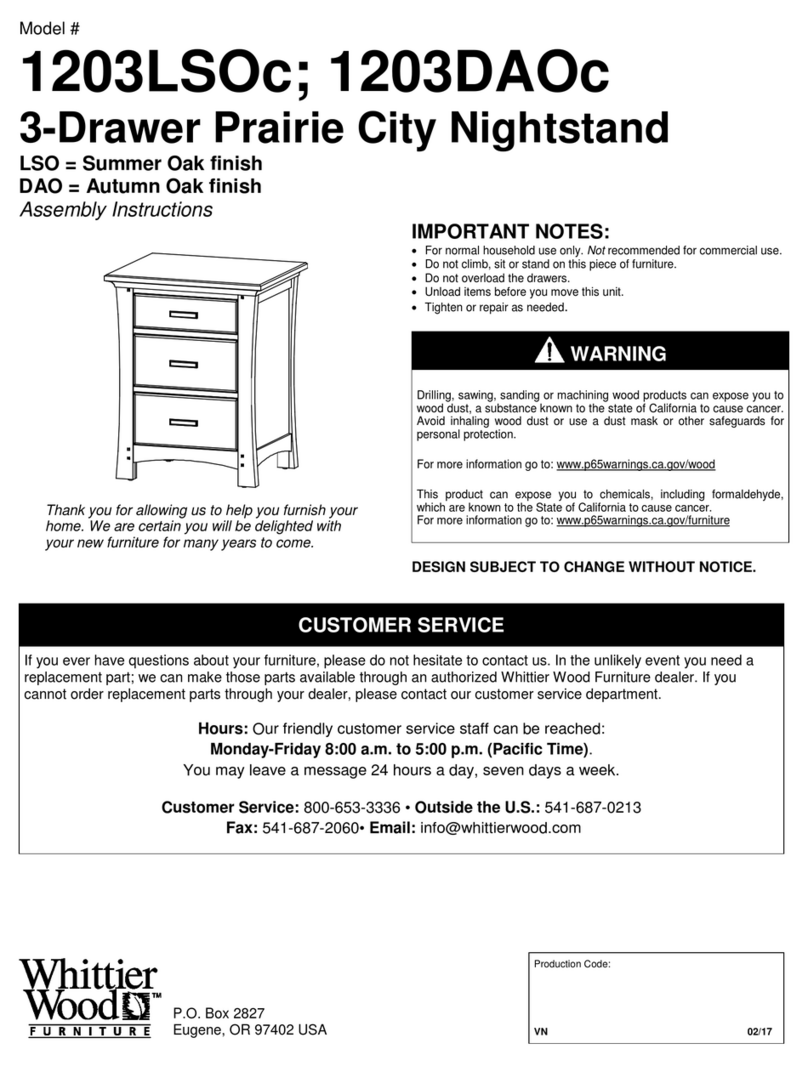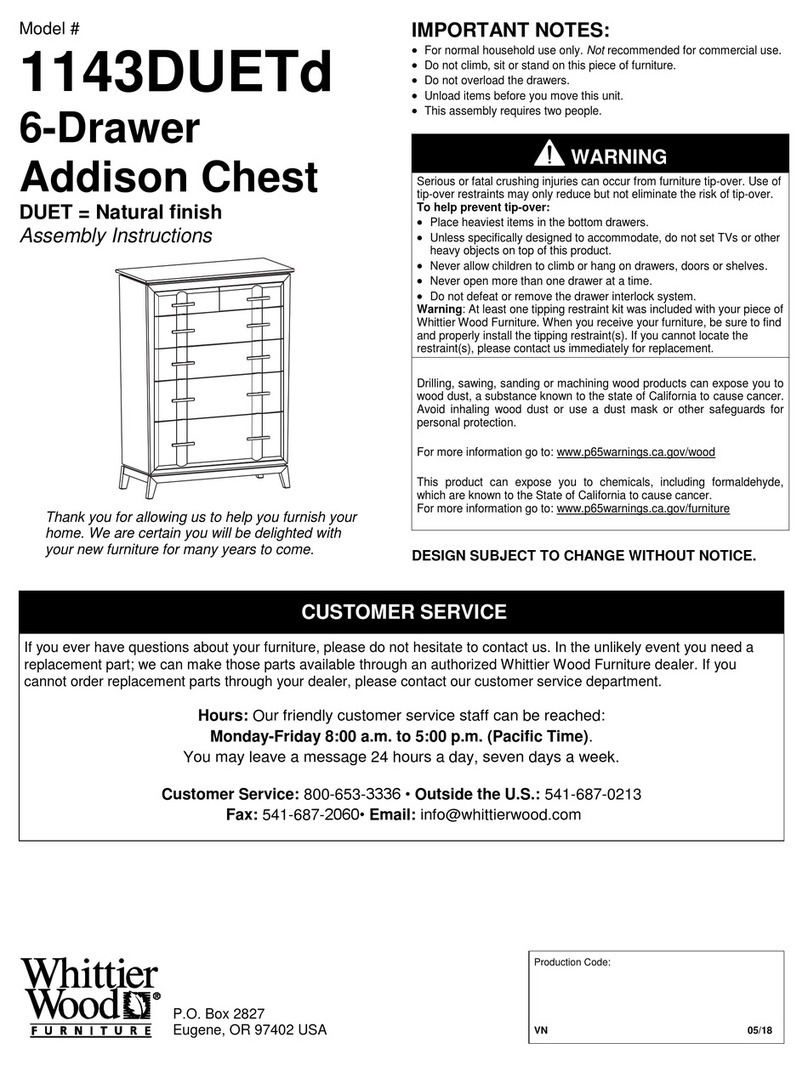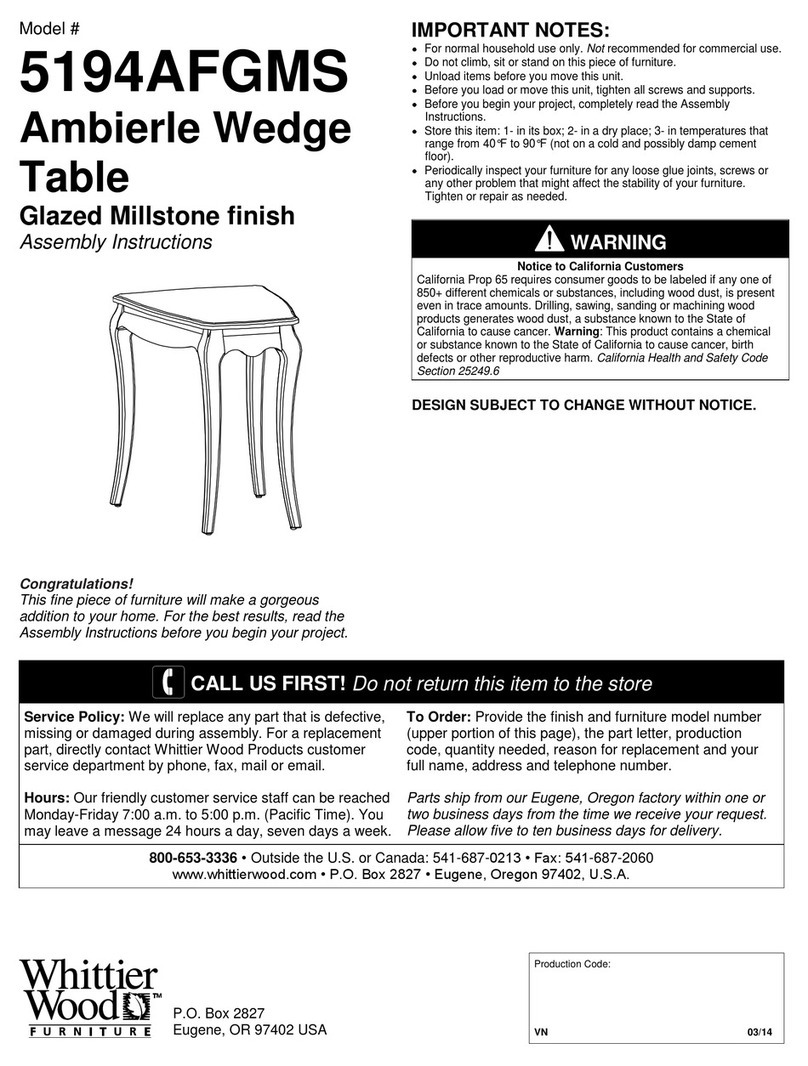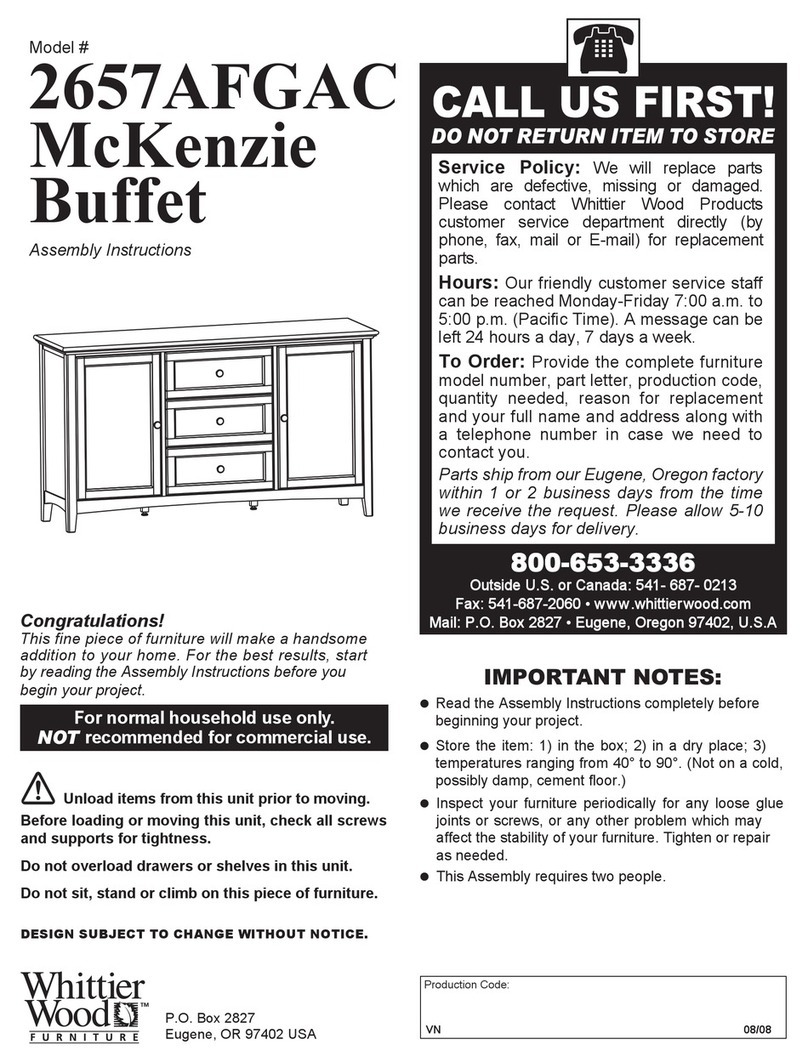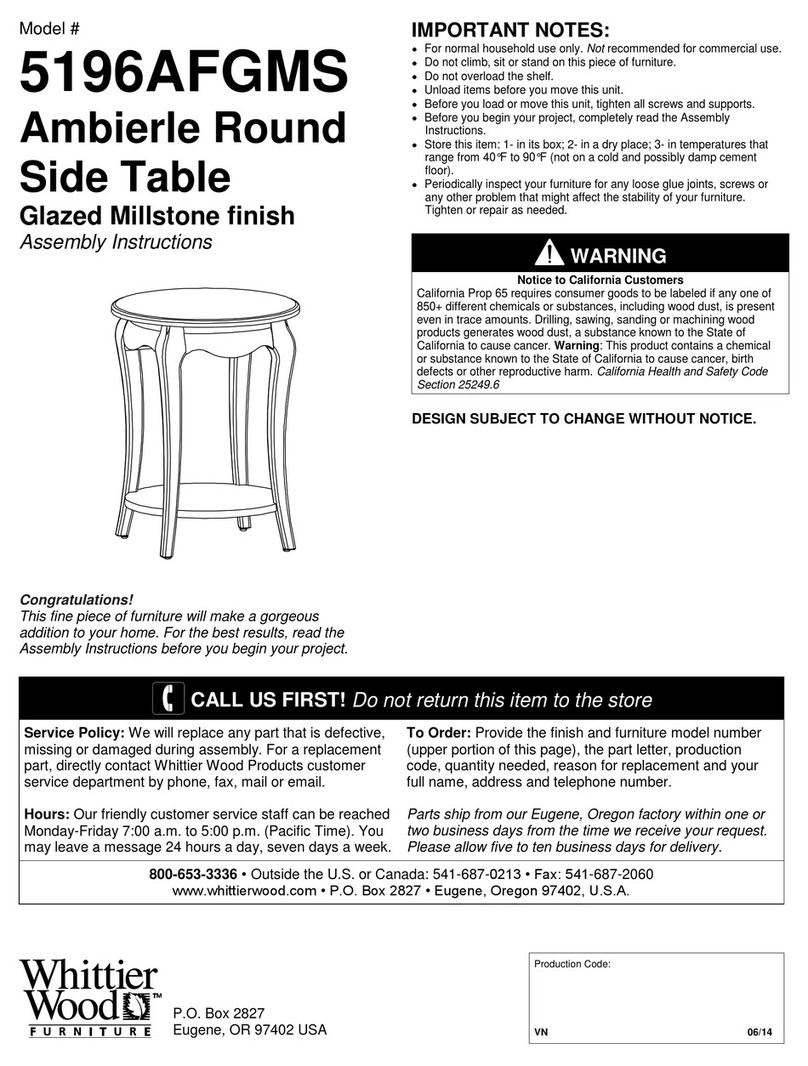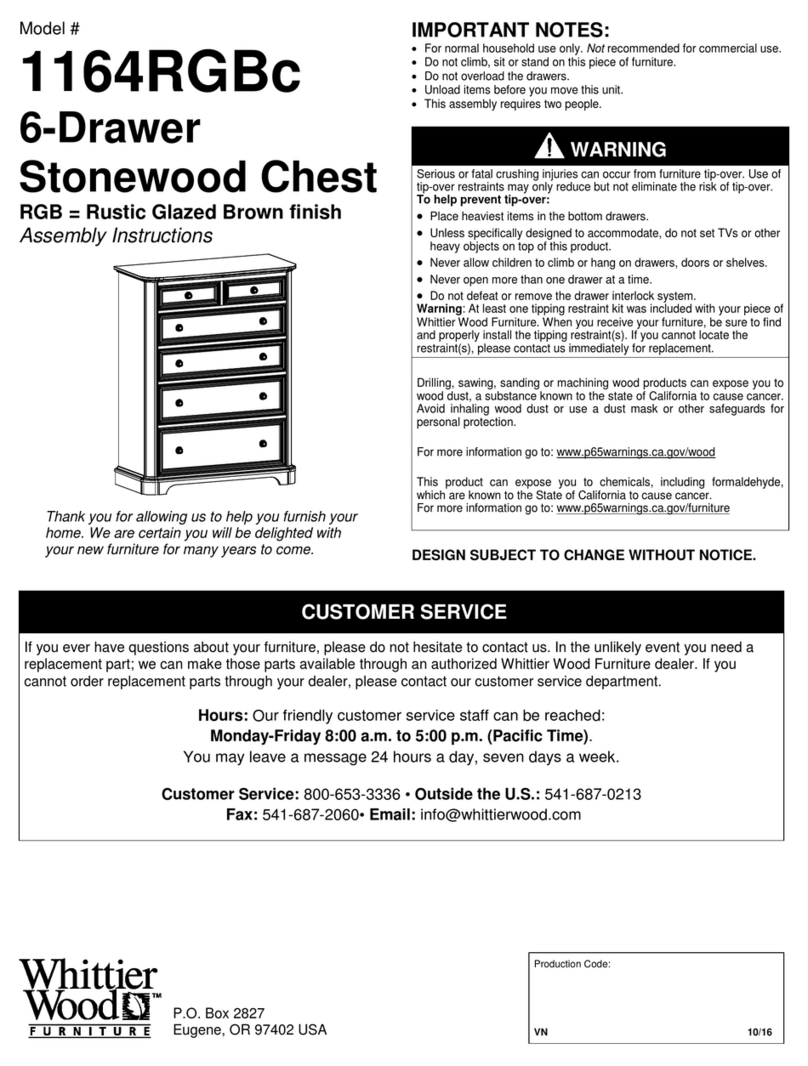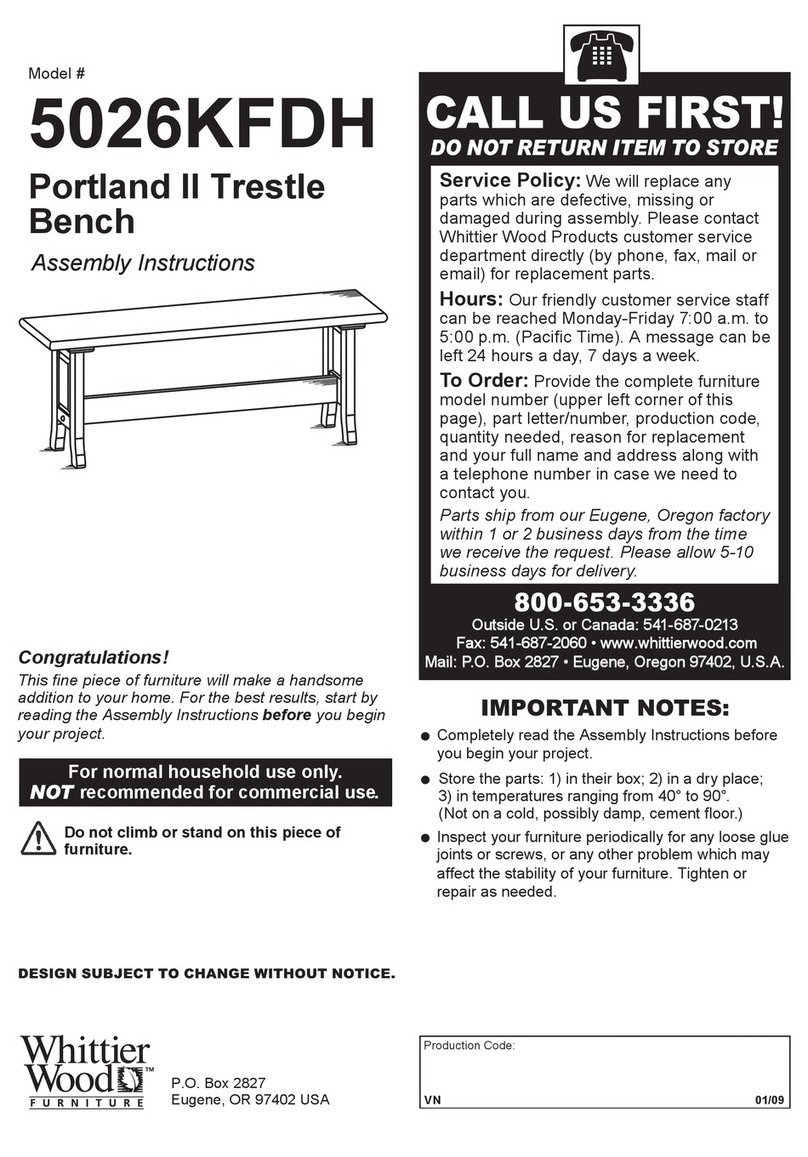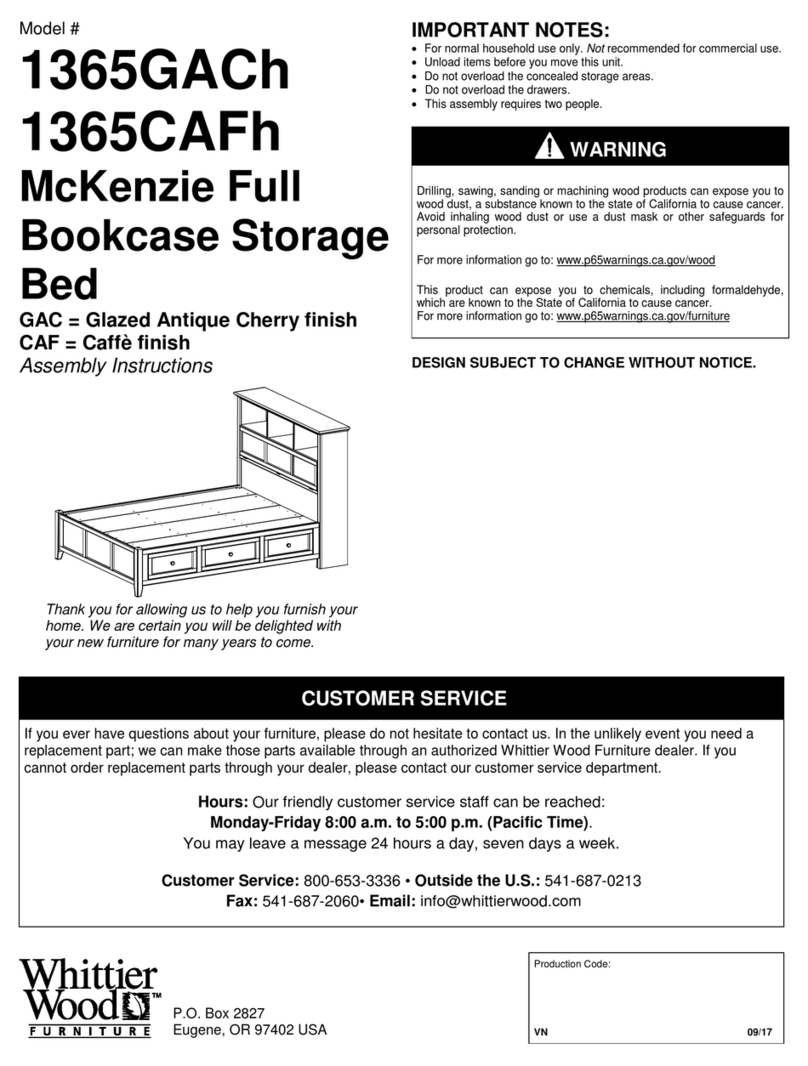
1. Choose a finish that will meet your expectations for the product you
are finishing. Are you matching existing furniture or do you want a
“natural” finish? Is the piece to be functional, decorative or both?
The answers to these questions may affect the type of finish you
choose.
2. Use products of the same brand to ensure compatibility of prod-
ucts.
3. ALWAYS follow the stain manufacturer’s instructions. Alder is a
porous hardwood and often looks best when following the finishing
directions for softwoods.
4. We recommend using a wood conditioner under oil base stains.
1. Assembly Instructions may contain special finishing informa-
tion for that item. Read both the Assembly Instructions and these
Finishing Hints completely before beginning.
2. Sand the entire piece, using #220 grit sandpaper. Sand with the grain
of the wood on flat surfaces and opposite the grain on turnings. Some
parts are plywood. Be careful not to sand through the veneer. End
grain (table top ends, seat edges, grooves on turnings, etc.) accepts
more stain. Extra sanding in these areas with a #320 grit sandpaper
will reduce stain absorption, creating a more evenly stained piece.
3.
When sanding is completed, wipe the surface of your furniture with a
cloth or tack rag. Make sure the item is free of dust before proceeding.
4. For most products, we recommend preparing and staining the wood
prior to assembly. Due to the assembly procedures for chairs, rockers
and stools, we recommend assembling these items prior to finish-
ing.
5. If you do choose to finish chairs, rockers or stools prior to assembly,
it is imperative that you protect the ends of dowels and spindles, and
the mortise holes where the wood is joined, from finishing products.
Use masking tape around the ends, being careful to cover only the
section that will be inserted (remove the tape after the finish has dried
and before the furniture is assembled). Wood glue will not bond if
finishing products are present. If you do get finishing product in these
areas, it must be removed to ensure proper bonding.
6. If glue is used in assembly of your furniture, remove any excess glue
spots or drips before finishing. Wood surfaces with glue WILL NOT
accept stains, and will leave a light spot. To remove glue, wipe off
as much as possible while wet, then lightly sand the surface until the
remaining glue is removed.
These are general hints. Refer to the instruction sheet for detailed
information on gluing your specific product. Your unit may not
need glue.
1. We strongly recommend that you first lay out all the parts and fa-
miliarize yourself with how they fit together before assembling with
glue. Glue will set up quickly and can cause damage to the parts if
you try to reposition any that have been assembled incorrectly.
2. Glue usually takes several hours to cure (or harden) but it will some-
times set up, or grab, in several seconds. Therefore, once you begin
final assembly, be sure to proceed quickly and diligently.
3. We recommend that you use a good wood glue, such as Elmer’s
Wood Glue or White Glue, Titebond Wood Glue or the equivalent;
unless the instructions call for a special type such as a slow drying
epoxy glue. Carefully read the glue manufacturer’s label and follow
all instructions.
4. Be sure the holes are clear of any dust so the glue will have a clean
surface to adhere to. Blowing in the holes before gluing is recom-
mended, but be sure to protect your eyes.
5. Avoid getting glue on surfaces to be finished! Most stains or
finishes will not penetrate where glue has been spilled. Wet glue
can be wiped off with a damp cloth. Follow with a light sanding of
the area to ensure a proper finish.
Rubber
gloves
Rags
Paper towels
Q-tips
Tack cloth
Drop cloth
Paint brushes
(bristle and
foam)
#220 & #320
sandpaper
Mineral spirits
Masking Tape
Rev. 6/07
(Gluing Hints - cont.)
6. Do not over glue! It is important to apply an even coat inside all
holes and slots. Use a small dowel or pencil to spread glue evenly
around the inside of the holes. Because of the fit of the spindles or
dowels in the holes, the spindle or dowel pushes glue to the bottom
of the hole. If too much glue is used, it will fill the hole and not allow
the spindle or dowel to go all the way in.
1. Read and follow label directions. Stir stain well before starting.
2. Test stain on an inconspicuous spot on your project, or use the
sample chip if one is provided. The sample chip must be sanded in
the same way as your furniture kit to ensure the piece will accept the
stain similarly. Put at least one coat of your top coat over the stain
sample, as it also affects the look of the stain. Test every type of
wood that is in your kit. Some of our products include more than one
type of wood, which may react differently to the stain color. Sample
chips for the different woods may be included. It may be necessary
to add a second coat of stain to lighter woods to match the darker
woods in your kit.
3. Apply stain with a poly brush or lint-free cloth. Apply stain over a
small area and wipe off excess. Working in small areas will make
the color easier to control.
4. Q-tips are ideal for hard to reach areas.
5. Allow to dry thoroughly before proceeding.
No top coat is required if using paint.
1. Always read and follow all label directions. Stir your finish coat
gently, do not shake. It will create bubbles that are hard to re-
move.
2.All surfaces (including the underside of table tops and inside draw-
ers) must be sealed with at least one layer of a top coat. This will
help minimize wood swelling, shrinkage, warping and cupping due
to changes in moisture content or temperature.
3. We recommend that you apply a minimum of two coats when us-
ing polyurethane or varnish (especially on all table top and work
surfaces). Sand lightly between coats using a #320 grit sandpaper
or 00 steel wool for the smoothest possible finish.
4. Some water-based finishes tend to raise the grain slightly. This can
be easily controlled with this sanding step. However, do not use steel
wool when using water-based finishes. Strands of steel fiber caught
in the wood can cause rust spots when coated with any water-based
product.
1. For best results when painting, first coat the wood with a primer. An
oil based primer would be best for a smooth finish. If you do not wish
to use a solvent based primer, a water based primer would work
almost as well.
2. Buy a quality brand paint. You may use a satin, semi-gloss, or gloss
sheen. Apply a second coat for a smooth finish. Lightly sand between
coats using a #320 grit sandpaper, so that the second coat will bond
well. Repeat as desired.
3. Since there is such a variation between paint manufacturers, refer
to your paint supplier for specific advice on using the paint that you
purchase.
